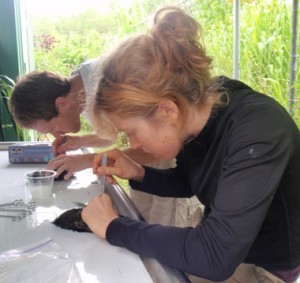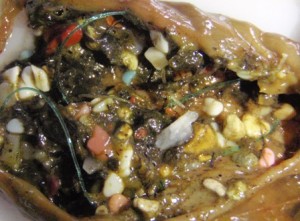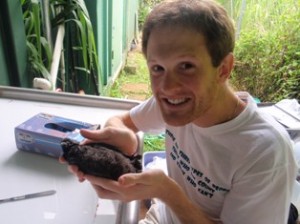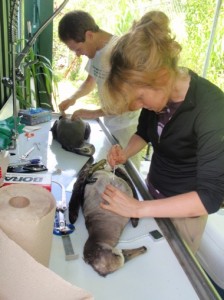This week I helped two graduate students of David Hyrenbach, Pam Michael and Andrew Titmus, perform necropsies on four seabirds that had been found dead on Tern Island. Tern Island is a small island in the French Frigate shoals northwest of the main Hawaiian islands. It is a home to many species of tropical seabirds, nesting green sea turtles and Hawaiian Monk seals. I spent a summer there years ago after graduating from college and Pomona student Matthew Barbour’06 went there after spending the summer on the Farallon Islands where Eleanor is currently. It’s possible that he found the birds we worked on!
These birds did not have all of their adult feathers; they died before leaving their nests. These chicks had recieved all of their food from their parents. The parents appeared to have been doing an OK job feeding them; they were really fat! One of the labels for one of the chicks said that a Bulwer’s petrel had taken over the burrow of the Tristam’s storm petrel. Perhaps the chick had been kicked out by the other bird.

Pam and Andrew performing necropsies on the two Tristam's storm petrel chicks found dead on Tern Island.
When we opened up the stomachs of the Tristam’s storm petrels it was shocking to see that their stomachs were full of small plastic particles and even fishing line. It is possible that this plastic contributed to their deaths.

Numerous pieces of plastic and fishing line inside of one of the Tristam's storm petrel chicks. The stomach of the other chick looked similar.
Next we examined the stomachs of two adult black-footed albatross.
Andrew is investigating the quantity and type of plastic ingested by albatross. In addition to performing necropsies on dead birds, he dissects apart boluses (pellets of undigestible prey parts) regurgitated by albatross breeding on Midway Island and Kure Island, both leeward Hawaiian islands. In California, marine educators in the organization Oikonos are bringing albatross boluses into classrooms so that school children can see firsthand where plastic ends up. The two albatross that we dissected were full of flying fish eggs and squid beaks. Andrew is going to go through the contents to see if there were any plastic objects in there as well.
For two related posts, see Eleanor Caves’ post on ‘Gull Juju’ from the Farallon Islands project and my previous post ‘Operation Balloon Recovery’ from the Channel Islands Project.
Tags: Andrew, black-footed albatross, gyre, Pacific Ocean, Pam, plastic, seabird, Tristam's storm petrel


